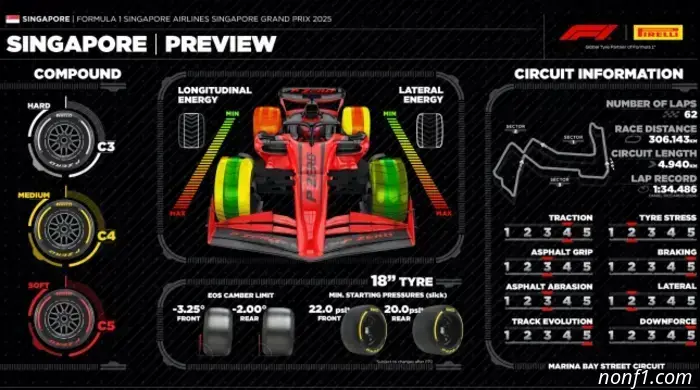
Pirelli expects one pit stop in Singapore.
Singapore, as Pirelli’s tyre specialists remind, is located just 140 km north of the equator, so it is no surprise that the climate there is hot and humid. Humidity levels in the area usually exceed 70%, and winter and summer temperatures are roughly the same, between 24–31°C.
Therefore, during the Singapore weekend both people and machinery are subjected to heavy loads, and the twisty nature of the circuit only adds to the challenge. However, the race takes place at night under artificial lighting, and the heat eases off somewhat by the evening.
For this round of the season the Italian company has brought tyres of the same compounds as a year ago, i.e. the hardest will be C3, C4 is used as the Medium, and C5 acts as the Soft.
As Pirelli’s press release on the upcoming Grand Prix indicates, calculations showed that the new C6 compound—the softest—cannot be used on the Marina Bay circuit because its 19 corners impose excessively high physical and thermal loads, which could lead to tyre overheating.
It is precisely the exposure to high temperatures during the race that becomes the main cause of intense tyre degradation. For this reason, among others, Hard and Medium tyres are best suited for the Sunday race, although one cannot rule out that some drivers will try to start on the softest tyres, which provide the most effective grip.
Despite a slight reconfiguration of the circuit two years ago aimed at increasing the chances of overtaking, such manoeuvres on the Singapore track remain a fairly rare occurrence. They are, however, theoretically possible if one car is on a relatively fresh set of tyres and another on a significantly worn set, since the speed difference would then be considerable.
In 2024 only two drivers chose to start on soft tyres, four on hards, and the rest of the cars were fitted with Mediums. Incidentally, that race was unusual for Singapore because it was not interrupted by a safety car at all, which allowed 17 drivers to complete the distance with a single pit stop.
Carlos Sainz, having started on a set of Mediums, made a pit stop on lap 13 and then ran to the finish on the hards, which lasted 49 laps, something of a record for that race.
When devising tactical plans, teams this year will take into account that the pit-lane speed limit has been raised from 60 to 80 km/h, i.e. the total time lost during a pit stop will be somewhat reduced.
The asphalt surface of the Singapore circuit is quite smooth and its abrasiveness is very low, but sections with the markings typical of street circuits become very slippery in the rain, and precipitation in this region can never be ruled out.
Moreover, there are very few run-off areas and the barriers sit close to the track, so it is best not to make mistakes there, as they can have serious consequences.

Other articles
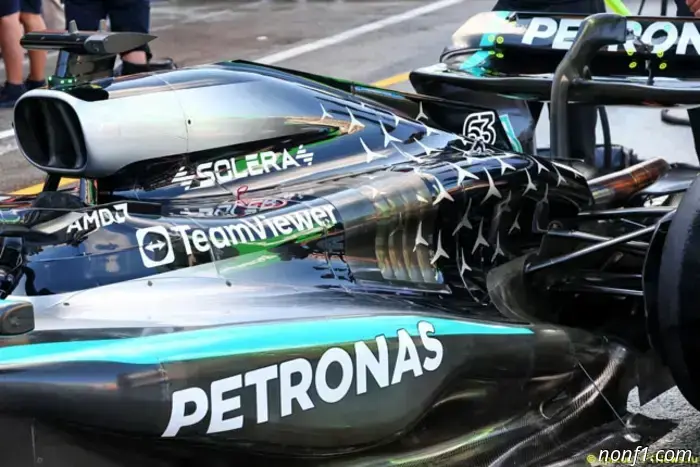 Lando Norris: I'm ready to repeat last year's victory.
Last year Lando Norris won the Singapore Grand Prix, and now the British McLaren driver is determined to repeat that success.
Lando Norris: I'm ready to repeat last year's victory.
Last year Lando Norris won the Singapore Grand Prix, and now the British McLaren driver is determined to repeat that success.
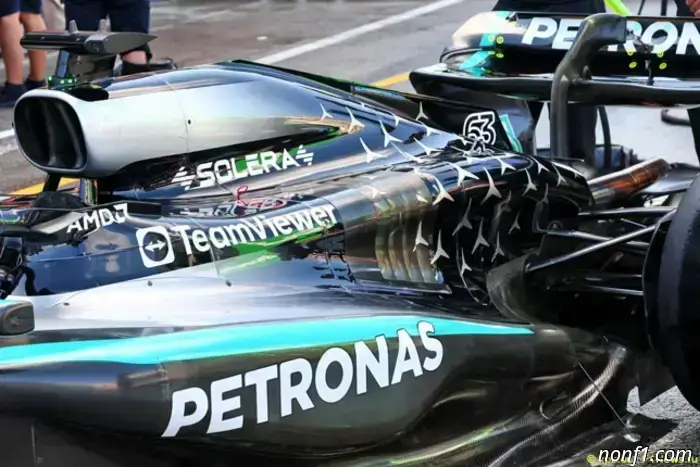 Mercedes is counting on help from customer teams.
Mercedes expect to gain an advantage in 2026 thanks to having more customer teams than their rivals.
Verstappen — "Driver of the Day" after victory at the Nordschleife
The organizers of the NLS series named Max Verstappen "Driver of the Day" after his convincing victory on the Nürburgring's "Nordschleife," and it brought him some pleasant feelings.
Mercedes is counting on help from customer teams.
Mercedes expect to gain an advantage in 2026 thanks to having more customer teams than their rivals.
Verstappen — "Driver of the Day" after victory at the Nordschleife
The organizers of the NLS series named Max Verstappen "Driver of the Day" after his convincing victory on the Nürburgring's "Nordschleife," and it brought him some pleasant feelings.
 Ocon: The Singapore Grand Prix has grown on me over the years.
Of the Haas F1 drivers, only Esteban Ocon has experience racing in Singapore: he has started this race six times and scored points on two occasions.
Ocon: The Singapore Grand Prix has grown on me over the years.
Of the Haas F1 drivers, only Esteban Ocon has experience racing in Singapore: he has started this race six times and scored points on two occasions.
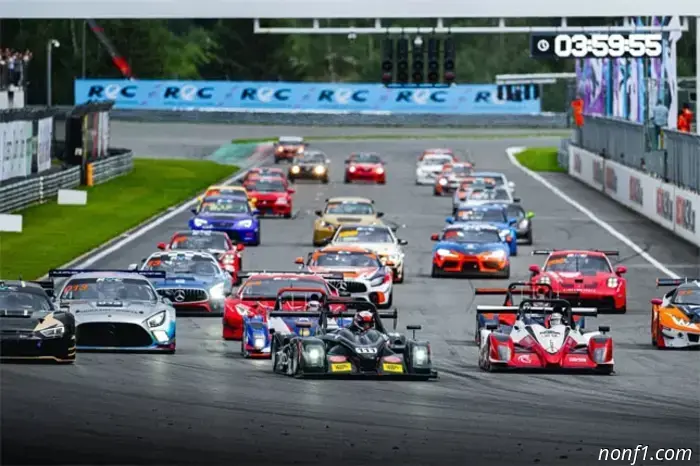 REC: Season finale on October 4 at Moscow Raceway
On Saturday, October 4, the Russian Endurance Racing Series (REC) concludes the 2025 season at the Moscow Raceway circuit near Moscow.
REC: Season finale on October 4 at Moscow Raceway
On Saturday, October 4, the Russian Endurance Racing Series (REC) concludes the 2025 season at the Moscow Raceway circuit near Moscow.
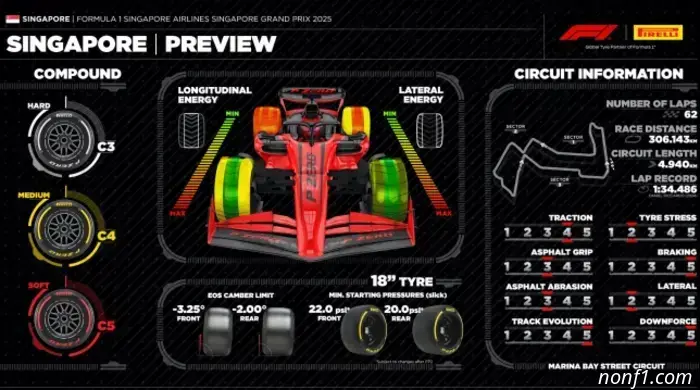 The former president of the Miami Grand Prix has joined Cadillac.
The Cadillac team, which will debut in Formula 1 in 2026, continues its preparations and is hiring staff. Today it was announced that Tyler Epp has signed a contract and assumed the position of Head of Global Commercial Strategy.
The former president of the Miami Grand Prix has joined Cadillac.
The Cadillac team, which will debut in Formula 1 in 2026, continues its preparations and is hiring staff. Today it was announced that Tyler Epp has signed a contract and assumed the position of Head of Global Commercial Strategy.
Pirelli expects one pit stop in Singapore.
Exposure to high temperatures is becoming the main cause of tyre degradation in Singapore. This is also why Hard and Medium tyres are best suited for the race.
